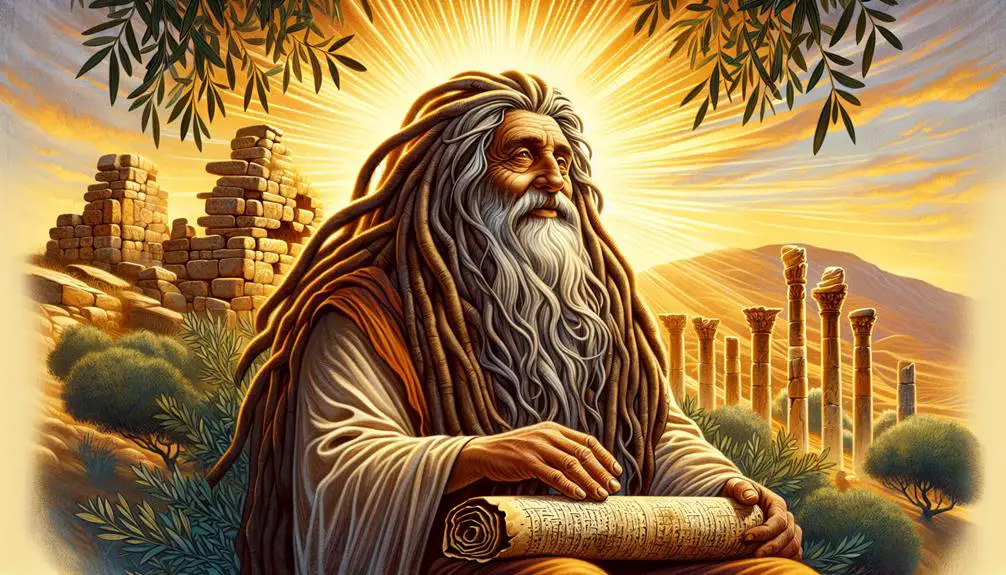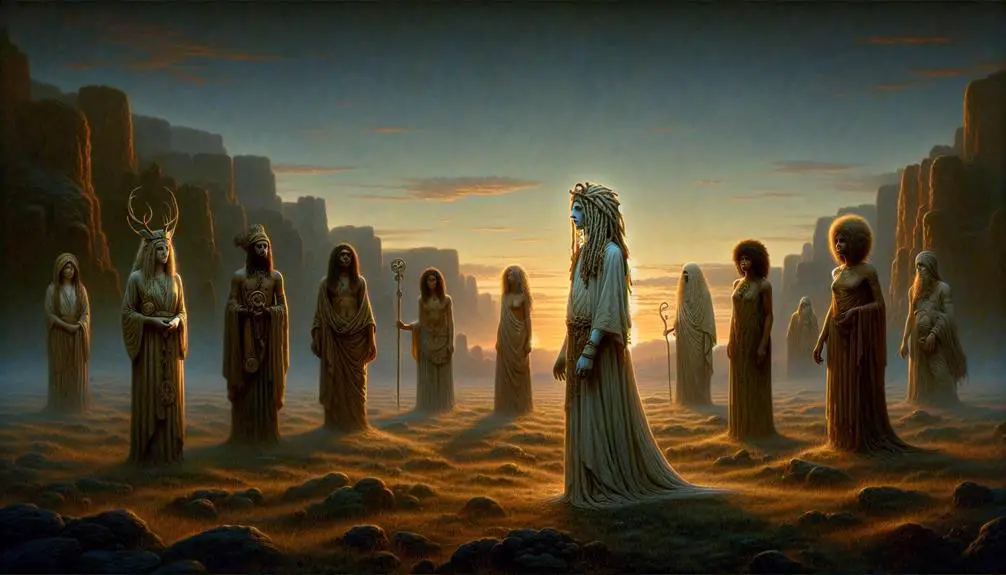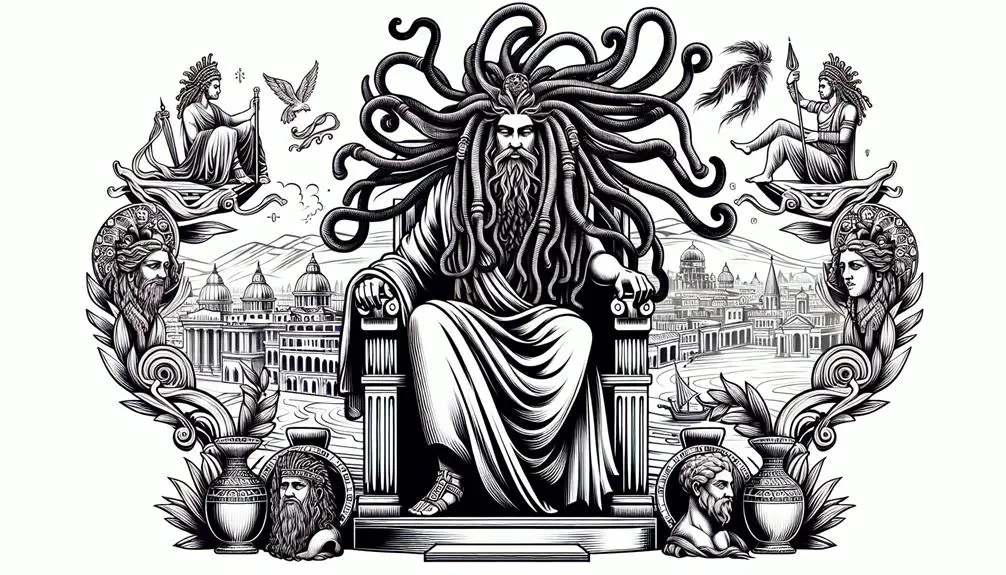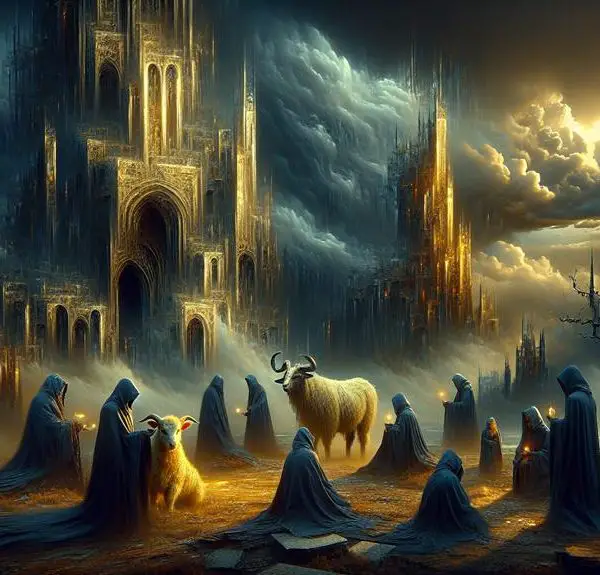Discover who in the Bible may have had dreadlocks and the intriguing significance behind their distinctive locks.

Who Had Dreadlocks in the Bible
You might not find explicit mentions of dreadlocks in the Bible using a Google search, but when you closely examine the scriptures, you'll uncover fascinating insights about biblical figures who may have sported this distinctive hairstyle.
Consider Samson, whose incredible strength was linked to his uncut hair due to a Nazirite vow, or Absalom, known for his heavy, luxurious mane.
The concept of dreadlocks might also tie into the mysterious Nazirites beyond Samson or the poetic imagery in Solomon's writings.
As we explore these ancient texts together, you'll uncover how hair played a pivotal role in the identity and vows of these figures, leaving you to ponder the significance of their possibly locked tresses in a historical and cultural context.
Key Takeaways
- Samson's uncut hair, possibly forming locks, symbolized his Nazirite vow and divine empowerment.
- Solomon's poetic verses hint at the beauty and abundance symbolized by locked hair.
- Absalom's heavy hair, potentially in locks, underscored grooming choices impacting one's fate.
- John the Baptist's austere lifestyle, while not specifying hair, emphasized humility and devotion, aligning with natural hair symbolism.
Samson's Nazirite Vow
Samson's Nazirite vow, as detailed in the Book of Judges, explicitly required him to abstain from cutting his hair, symbolizing his dedication and consecration to God. This vow wasn't just a mere personal commitment; it was a divine mandate that linked Samson's physical attribute—his hair—to his spiritual and supernatural strength. You'd find that in the narrative, the length of Samson's hair directly correlates with his extraordinary powers, showcasing hair symbolism at its peak within the biblical context.
Delving deeper, it's crucial to understand that Samson's strength wasn't merely physical but also represented divine empowerment. His uncut hair served as a tangible sign of his Nazirite vow, marking him as God's chosen instrument. This relationship between hair and divine strength isn't just a narrative device; it's a profound exploration of the connection between outward signs and inward grace. In Samson's case, his hair was the outward symbol of his inner sanctity and the source of his strength, granted by God.
What makes Samson's story especially compelling is the dramatic turn when his hair is cut, leading to the loss of his strength. This isn't just a tale of physical might but a poignant reminder of the consequences of breaking one's vow to God. Through this, the narrative emphasizes the significance of hair symbolism in conveying deeper spiritual truths: that Samson's strength was less about his physical abilities and more about his fidelity to the vow that consecrated him to God's service.
Absalom's Heavy Hair

While Samson's story highlights the spiritual significance of uncut hair, Absalom's narrative in the Bible presents another profound exploration of hair, focusing on its weight and the implications thereof. Absalom, known for his striking appearance and notably heavy hair, offers a unique perspective on hair management and its potential battle implications.
Annually, it's recorded that Absalom had to cut his hair because its weight became too burdensome. This detail isn't merely a footnote in his story; it serves as a pivotal element that underscores the practical challenges and considerations of hair management in ancient times. The weight of Absalom's hair, measured at 200 shekels according to the royal standard, wasn't just a testament to his vanity but also highlighted the physical encumbrance that such a mass of hair could represent.
In the context of battle implications, Absalom's heavy hair played a crucial role in his demise. During a pivotal moment of conflict, his hair became entangled in the branches of an oak tree, leaving him hanging and vulnerable to his enemies. This incident vividly illustrates how something as personal and seemingly benign as hair management can have dire consequences in the realm of warfare and personal safety.
Analyzing Absalom's story, you gain insight into the complexities of hair in biblical times, not only from a cultural or aesthetic viewpoint but also considering its practical implications in daily life and conflict situations. Absalom's heavy hair serves as a cautionary tale on the potential risks and challenges associated with personal grooming and physical appearance, especially in the unforgiving context of ancient warfare.
The Mysterious Nazirites

Delving into the biblical narrative, one encounters the enigmatic Nazirites, whose vow of separation to God introduces a distinct dimension to the discourse on hair in sacred texts. The Nazirite origins trace back to specific instructions laid out in the Hebrew Bible, particularly in the Book of Numbers, where the Nazirite vow is detailed. This vow represented an individual's voluntary commitment to live in a state of holiness and separation unto God for a period.
Central to understanding the Nazirites is grasping their ritual prohibitions, which were threefold. Firstly, they were to abstain from any products derived from grapes, symbolizing a renunciation of worldly pleasures. Secondly, they couldn't come into contact with corpses or graves, even those of family members, to maintain ritual purity. Lastly, and most relevant to our discussion, they were forbidden from cutting their hair during the vow period. This last prohibition is where hair, and potentially dreadlocks, become significant in the discussion.
The uncut hair of the Nazirite was a public, visual sign of their vow, a symbol of their dedication and separation to God. It's conceivable that over long periods, their hair could naturally form locks, thus connecting Nazirites to the concept of dreadlocks in a sacred context. This abstention from hair-cutting underscores the profound relationship between physical appearance and spiritual dedication in ancient times.
The Nazirite vow, with its origins and ritual prohibitions, adds a layer of depth to the biblical understanding of hair. It illustrates how hair wasn't merely a personal adornment but carried significant spiritual and symbolic weight.
Solomon's Locked Imagery

Exploring further, we find that Solomon's imagery, particularly his references to locked hair, offers additional insights into the biblical significance of hair. His poetic works, especially in the Song of Solomon, contain vivid imagery that has been subject to various artistic interpretations and discussions about its cultural significance. Solomon's depiction of his beloved's hair as a flock of goats descending from Gilead (Song of Solomon 6:5) has sparked debates about whether this imagery suggests the presence of locked hair in ancient Israelite culture.
The table below highlights key aspects of Solomon's locked imagery and its implications:
Aspect |
Interpretation |
Cultural Significance |
|---|---|---|
Imagery |
Flock of goats |
Symbolizes abundance and beauty |
Context |
Romantic poetry |
Expresses ideal forms of beauty |
Artistic Interpretations |
Varied |
Reflects changing views on aesthetics |
Historical Context |
Ancient Israel |
Provides insight into cultural practices |
Modern Implications |
Reexamination of biblical beauty standards |
Influences contemporary discussions on hair and identity |
Solomon's references to hair, interpreted through the lens of cultural significance, suggest that locked hair might not only have been present but also admired within the context of ancient Israelite society. This possibility challenges modern preconceptions about hair and beauty, underlining the importance of understanding historical and cultural contexts in biblical interpretation.
Moreover, these discussions contribute to broader conversations about identity and expression, highlighting how ancient texts like those attributed to Solomon can inform our understanding of cultural practices and their evolution over time. The examination of Solomon's locked imagery thus serves as a crucial point in understanding the complex tapestry of hair, beauty, and identity in the biblical world.
John the Baptist's Lifestyle

John the Baptist's ascetic lifestyle, marked by his choice of clothing and diet, provides a stark contrast to the conventional norms of his time. Living in the wilderness, he chose a life of simplicity and detachment, which was significantly reflected in his appearance and daily habits. This choice wasn't merely for survival but was deeply intertwined with his spiritual mission, emphasizing purity, repentance, and preparation for the coming of the Messiah. Let's delve into the aspects that made John's lifestyle so distinct:
- Desert Dwelling: John chose the desert as his home, a place far removed from the luxuries and distractions of city life. This setting wasn't just a backdrop for his ministry but a vital element of his message. The desert, with its harsh conditions and profound silence, symbolized a place of purification and encounter with God. It was here that John fully embraced his role as a prophet, calling people to a baptism of repentance.
- Wild Locusts Diet: His diet mainly consisted of wild locusts and honey. This choice reflected his commitment to a life of austerity. Eating wild locusts, considered clean by Levitical law, and wild honey, he demonstrated a reliance on God's provision directly from nature, eschewing cultivated foods and the comforts of settled life.
- Sartorial Choices: John's clothing, made of camel's hair with a leather belt around his waist, further illustrated his ascetic lifestyle. Such attire was far from the soft, luxurious garments worn by the elite and religious leaders of his time, symbolizing his prophetic mission and his call to humility and repentance.
John the Baptist's lifestyle wasn't just a personal choice but a profound statement of his mission and message, deeply resonating with the themes of simplicity, reliance on God, and spiritual awakening.
Frequently Asked Questions
How Did the Cultural Significance of Dreadlocks in Ancient Times Compare to Their Significance in Modern Societies?
In ancient times, dreadlocks symbolized spiritual and ethnic identity, reflecting a deep-rooted cultural significance. Nowadays, they're a fashion statement and often a topic of cultural appropriation debates.
Modern interpretations vary widely, from expressions of personal freedom to spiritual connections, contrasting with their historical sacredness. This evolution highlights the dynamic nature of cultural symbols and the importance of understanding their origins to navigate the complexities of cultural appropriation respectfully.
Were There Any Specific Rituals or Ceremonies Associated With Starting or Cutting Dreadlocks in Biblical Times?
Ever wondered about the significance of lock maintenance in historical times?
Unlike today's varied practices, in biblical times, specific rituals or ceremonies for starting or cutting dreadlocks weren't explicitly documented.
However, personal hygiene and rites surrounding hair were deeply rooted in cultural and religious practices.
Analyzing these ancient texts, it's clear that while details are scarce, the cultural importance of hair maintenance transcended mere appearance, embedding itself in the fabric of society.
Is There Any Archaeological Evidence or Artistic Depictions That Support the Presence of Dreadlocks in Biblical Narratives?
You're exploring whether there's tangible proof of dreadlocks in ancient texts and art. While concrete archaeological evidence specifically highlighting dreadlock maintenance or hair symbolism in biblical stories might be scarce, artistic depictions from various periods do reflect interpretations of these narratives with characters sporting dreadlocks.
This suggests a historical acknowledgment of dreadlocks' significance, even if direct proof from the era in question remains elusive. It's a fascinating intersection of culture, belief, and personal expression.
How Did the Concept of Hair and Hair Styles, Like Dreadlocks, Influence Social Status or Religious Identity in Biblical Communities?
In biblical communities, hair symbolism and religious hairstyles significantly impacted social status and religious identity. If you sported specific hairstyles, like dreadlocks, it often signified your devoutness or societal role. These styles weren't just about fashion; they were deeply embedded with cultural and spiritual meanings.
Hair could symbolize a covenant with God, personal vows, or societal standing, influencing how others perceived and interacted with you within these ancient societies.
Are There Any Mentions or Implications of Dreadlocks in Biblical Texts That Are Often Overlooked or Misinterpreted by Contemporary Readers?
You're barking up the right tree if you're curious about overlooked biblical hair references. Specifically, Samson's locks and Nazirite vows hint at dreadlocks' significance beyond mere style.
These narratives, often misinterpreted, suggest a deeper, spiritual emblem tied to vows of dedication to God. Analyzing these texts reveals how such hair, possibly akin to dreadlocks, symbolized a sacred covenant, challenging contemporary readers to rethink biblical figures' appearances and their commitments.
Conclusion
As you've journeyed through the tales of biblical figures adorned with locks, from Samson's divine vow to Absalom's weighty mane, and the enigmatic Nazirites to Solomon's poetic verses, a vivid tapestry of spirituality and strength is woven.
These locks weren't merely hair but symbols of faith, rebellion, and divine wisdom. John the Baptist's austere life further colors this picture, illustrating a profound connection between the physical and spiritual realms.
Each strand tells a story, binding the past with timeless lessons on devotion and identity.



Sign up